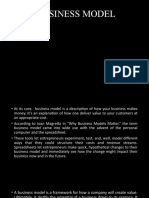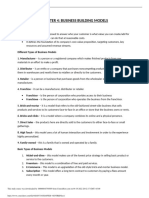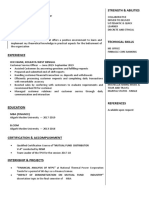0% found this document useful (0 votes)
15 views10 pagesEntrep Reviewer
The document states that the training data is current up to October 2023. It implies that any information or developments occurring after this date may not be included. This sets a temporal limit on the relevance of the data provided.
Uploaded by
garciamercygrace24Copyright
© © All Rights Reserved
We take content rights seriously. If you suspect this is your content, claim it here.
Available Formats
Download as DOCX, PDF, TXT or read online on Scribd
0% found this document useful (0 votes)
15 views10 pagesEntrep Reviewer
The document states that the training data is current up to October 2023. It implies that any information or developments occurring after this date may not be included. This sets a temporal limit on the relevance of the data provided.
Uploaded by
garciamercygrace24Copyright
© © All Rights Reserved
We take content rights seriously. If you suspect this is your content, claim it here.
Available Formats
Download as DOCX, PDF, TXT or read online on Scribd
/ 10



























































































